[Party History Tiantian Xue] The Tenth Corps, the commander Ye Fei's political commissar Wei Guoqing, the 28th Army drinking hate Golden Gate becomes eternal pain
Author:Police Garden Time:2022.06.25
Click to follow the official WeChat official WeChat of the Ministry of Public Security and Propaganda Bureau


The 10th Corps of the Chinese People's Liberation Army was the last military regiment in the third field combat sequence. It began to have only 3 troops. Later, the 32nd Army was added. Repeatedly responsible, it can be called a rising star. Because the commander of the Corps is the famous general Ye Fei, he has the reputation of "Ye Feixiong". Most of the ministries have continued to this day, it is rare.
Sanno's weakest military regiment
The 10th Corps was formerly known as the East China Field Army. In March 1948, in order to cooperate with the offensive of the outer forces and facilitate the counterattack of the inside line of northern Jiangsu, Hua Ye decided to go south from Shandong, which originally belonged to the Shandong Corps, and fought with the 11th and 12th columns who insisted on fighting behind the enemy in the middle of China. Hua Ye 4th Corps, the Northern Jiangsu Corps, commander Wei Guoqing and Chen Yixian, a political commissar. The main battle of the Corps was the battlefield of the northern Jiangsu, and the Shandong and Central Plains battlefields have participated in major battles such as Yilin, Jinan, and Huaihai.
In February 1949, Hua Ye formed 4 military regiments in Misako. According to the principle of "combination of strong and weakness", the original collisions of the former military regiments were disrupted and reorganized. Most of the Northern Jiangsu Corps was changed to the 10th Corps in Jiangsu Lianghuai Area, Ye Fei, commander of the Corps, Wei Guoqing, Political Commissar, Chen Qingxian, and Xiao Wangdong, Director of the Political Department. people.

◆ General Ye Fei, commander of the 10th Corps.

◆ General Wei Guoqing, political commissar of 10 Corps.
Ye Fei is a well -known young general of Sanno. He is young, dare to bright sword, and bravely war. Previously, due to illness in Jinan, he did not participate in the Huaihai Campaign. After the founding of the People's Republic of China, Ye Fei was awarded the rank of generals and was named by "overseas Chinese" because of his dual nationality (China, the Philippines).
Wei Guoqing is the founder of the Northern Jiangsu Corps and has participated in the leadership of the Best Uprising. In combat command, there are both fearless heroic spirit and meticulous strategies and excellence. After the founding of the People's Republic of China, he led a military advisory regiment to the Vietnam to assist the Vietnamese People's Army for the war of resistance to France. After returning to China, the master Gui 20 years. In 1955, he was also awarded the rank of general.
The 28th Army was adapted from the original 10 vertical, and the commander Zhu Shaoqing and the political commissar Chen Meizao, which under the jurisdiction of the 82nd, 83th, 84th Division. The army came from the Bohai Sea and formed in April 1947. Don't be afraid of fighting hard battles, not afraid of bones, you can fight everything. The fighting style is tough and tenacious, blocking the aid in Hua Ye, and the Kuomintang Army who has passed on to praise: "If you don't move, it must be ten verticals." Su Yu commented on the 10 vertical of the 6 main columns of Hua Ye, who is good at defense. He believes that the combat effectiveness of a troops is not to see how many prisoners of war and how many weapons are paid, but to see it measures its role in the victory of the battle. The 82th Division of the affiliated is the main division of the Sanno, and it is known as the "Bohai Digest Brigade".
The 29th Army was adapted from the original 11 vertical, the commander Hu Bingyun and Zhang Fan, the political commissar, and the 85th, 86th, and 87th Division under the jurisdiction. The army came from Suzhongzhong and was formerly known as the 7th Column of the New Fourth Army Central Field Army, which was established in November 1945. It has a certain basis of the Red Army and comes from the new four army 6 regiments of Ye Fei as the head of the regiment. 29 Army forces are complex and their strength is not weak. During the liberation of the war, after supporting the enemy, the stronger in the mobile China, the stronger the war. The 85th Division of the Affiliated Division is the main division of the Corps and the Army.
The 31st Army was adapted from the original 13 vertical, the commander Zhou Zhijian and the political commissar Chen Huatang, and the 91st, 92nd, and 93th Division under the jurisdiction. The army came from Jiaodong and formed in August 1947. It was the third main force pulled out of Jiao Dong. The army was late, but the growth and progress was the fastest. After the war, it was refined and standing out. The 91st Division of the Affiliated Division is the main division of the Corps and the Army. It is full of vigor, simple and obedient, good at attacking, and dare to fight hard with the most fierce enemies. During the Jinan Battle, the 37th Division 109 Regiment (that is, the 271th Regiment of the 91st Division) established a special honor.
Although the 10th Army has a good foundation, the combat style is heroic and tenacious, and there are no lack of wonderful battles. However, there is still a small gap between the history of the army, the battle history, and the combat effectiveness. Moreover, the other regiments were 4 troops, and only 3 troops in the 10th regiments. The comprehensive strength is undoubtedly the weakest. In early 1950, the Sanno and the East China Military Region transferred the 32nd Army of Qingdao to Fujian in the south of the south of the Qingdao. It was supplied to 10 military regiments. It is regrettable that the army is also purely an upgrade of local armed forces.
Fayuki Tianshi
The 10th Corps was the first time. In March 1949, it went south to the Soviet Union. Ye Fei rushed to Jiangyan from Jinan to take office, and improved the command system of the Corps. In accordance with the order of the superiors, the 10th Corps and the 8th Corps formed the East Group, and they were commanded by Su Yu and Zhang Zhen. The 10th Corps strengthened the 23rd Army of the 7th Corps, the two police brigades of the Northern Jiangsu Military Region, and the special artillery soldiers, two regiments, and a total of 150,000 people across the Yangtze River from Zhanghuang Port to the west to Qixi Port. Multiple breakthroughs.
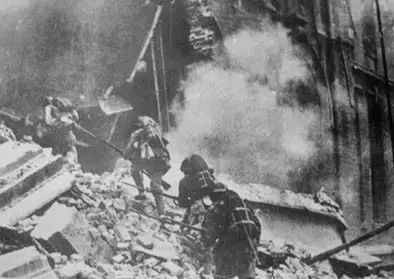
◆ During the battle of Jinan, the 13th and 37th Division broke through Kun Shunmen.
Compared with the crossing the river crossing the river, the 10th Corps is the most difficult. Jiangyin is an important part of the enemy's defense, and Jiangyin fortress is the focus of the enemy's defense. The fortresses deployed the enemy 21, 54, and 123 troops, and there were 51 troops in the middle of the Yang. Among these troops, the 54th army of the Han Dynasty was equipped with good equipment and strong combat effectiveness. Even if our army crossed the river smoothly and occupied the beach head position, it was possible to be pinched by the enemy. However, the south bank Jiangyin is the narrowest place on the lower reaches of the Yangtze River, only 1500 meters, known as the "Jiangfang Portal". If the east side is selected, the river surface is too wide, and the voyage time is long, and it is difficult for the troops to land in the breakthrough before dawn. When choosing the West, the crossing the river troops is too crowded, and it is easy to drag my time to cut off the Beijing -Hangzhou railway and worship the enemy. Weigh the advantages and disadvantages, so you have to choose Jiangyin. It is beneficial to the uprising of the Jiangyin Fortress under the long -term work of the CCP's secret organization. The contact work has been transferred to the 10th Corps. On the evening of April 20, the Crossing River Campaign officially started, and the China Group first broke through the river defense. On the evening of the 21st, the East and West Group also started. The first echelon commanded by the 10th Corps was the 29th, 28th, and 23rd Army from the front line of Zhang Huanggang to Qixun Port to cross the Yangtze River side by side. After the battle was launched, the river was raining. The soldiers of our army forgot to die, and they succeeded, and they were directly available on the other side. At about 20 o'clock, the assault teams successively broke through the Kuomintang military river defense in Changshan, Wang Shitang, Tiansheng Port and other places. And take advantage of the wins to develop on both sides and in depth. At the same time, the 7,000 officers and soldiers from Jiangyin announced the battlefield uprising and turned the artillery to bombard the Kuomintang military position. Ye Fei and Wei Guoqing led the hard -working command post to cross the river with one echelon, and effectively implemented a timely command.
During the day, 4 warships including the Royal Navy "Purple Sali" and "Black Swan", including the British Navy, drove into the Yangtze River to cross the river. Regardless of my warnings, the artillery of my 10th and 8th Corps was fierce. Also hit, forced it to strand or escape.
On the afternoon of the 22nd, the 10th Corps entered the front line of Xiangshan, Qinhuangshan, Nanzha, and Baizhang Town, and controlled the beach head position 50 kilometers and 10 kilometers deep. On the 23rd, he continued to advance deep into the enemy, successively liberated Changzhou, Wuxi and other places, cutting off and controlling the Ninghu Railway. The 31st army of the second echelon of the crossing the river passed the Yangtze River after the first echelon and put into battle.
◆ In May 1949, Ye Fei (left) was in the Battle Command of the Shanghai Campaign.
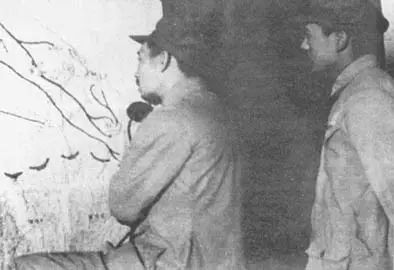
After the victory across the river, the 10th Corps carried forward the brave and tenacious and continuous combat style of combat. Regardless of fatigue, it was a journey day and night. From April 23rd to 26th, the 10th Corps commanded the 20th Army and the 23rd Army to annihilate the 4th, 51st and 28th Army in the Puyang area, and captured more than 20,000 enemies. The 28th Army took a roundabout mission to Wu Xing. On the afternoon of the 27th, he and the 27th Army division with the 9th Corps near Wu Xing on the afternoon of the 27th intercepted the escape of the enemy forces and fled to Hangzhou. On the same day, the 29th Army occupied Suzhou along the Ninghu and Shanghai Railway, which was alert to Shanghai. The enemy of the south of Nanjing, Zhenjiang, Wuhu and other places was surrounded by the 9th and 10th Corps in Langxi and Guangde. The two soldiers worked together and wiped out most of the enemy more than 60,000 people on the 29th.
Bitter Battle Songhu
After the Yangtze River Defense Line disintegrated, Sanno stepped the focus of the battle in Shanghai. Shanghai is the largest city and economic center in my country. There are more than 20,000 troops in the 8 military divisions of Tang Enbo Group. Materials. Its main position is in the suburbs, Pudi has Yuepu, Yang Xing, Da Farm, True Ru, Wusong and other strongholds. Pudong has Takahashi and Gaoxing bases. It is very tenacious.
On May 10, Sanno decided to command 8 troops and most of the special vertical capture of Shanghai, which will be involved in the direction of Pudong and Puxi. The 10th Corps commanded the 28th, 29th Army, and the 8th Corps 26th Army, and the 33 Army of the 9th Corps attacked from Suzhou and Changshu to Kunshan, Taicang, and Jiading. The Southeast Nine Corps surrounded the enemy in the city. The 31 military transfer gave the 9th Corps command and attacked Pudong with 30 arms.
In the combat process, the 10th Corps was smooth to seize the peripheral position, but it was very difficult when attacking the main position. Due to the insufficient estimation of the stubbornness and defense of the enemy's stubbornness and defense work, the 28th Army played Yang Xing and Liu Xing, and the 29th Army played Yuepu.
The 28th Army 84th Division 252 regiment attacked Yang Xing in the early morning of May 14th, fought to the daytime, and the enemy's two divisions fell all with the cooperation of the aircraft and armored vehicles. Remove. The 83 Division brought the 82th Division 244 regiment to attack the main position of the main position. After a night, due to insufficient firepower preparation, he could not attack several times. Ye Fei was quite anxious. On the afternoon of the 16th, the 33rd Army and the 76th Division of the 26th Army were commanded by the 28th Army.
The 28th Army was very bone and hard, and insisted on solving themselves. They actively summarized experience and lessons and discussed tutorial tactics. In addition to the reserve of the 82nd Division, the reserve team was still used for the final breakthrough, the 83rd and 84th Division continued to attack. In the early morning of the 20th, the international radio station was finally occupied.
Yuepu is the west gate of Wusong and Baoshan, and has one of the key areas of the 52nd Army. On the afternoon of the 13th, the 260th Division of the 29th Army ordered the 260th Regiment and the main force of the 85th Division 253 to launch a strong attack from the north and west side of Yuepu. With the support of the navy and air force, with various calibers of artillery, I hit my assault troops frantically. However, the warriors of the 253 regiment still rushed bravely, occupying some of the castles and embankments, and confronting the enemy. At 00:00 on the 14th, the 253th regiment was ordered to turn the two battalions from the west side of the group from the west side of Yuepu to the north side to attack the neighborhood. When the frontier of the enemy's frontier was 50 or 60 meters, it was found that the brothers notified by the superior notice have entered the neighborhood. There are errors, and a large number of people crowded in a wide range. Under the enemy's dense firepower network, the fierce battle was 1 hour, the two battalions, 6 consecutive and machine cannon were casualties, and the cadres of the battalion were lost. At 18:40 that day, the 87th Division launched a total attack against Yuepu again. Wang Kaide, the commander of the 253 regiment 2, commanded the remaining 5 and machine guns to connect a densely intensive bullet rain. At the same time, the 253th regiment also launched a final attack from the west side of the town from the west side of the town. This time, our army was more prepared. The artillery, blasting and assault were closely coordinated, the attack was proper, and the troops moved rapidly, making it difficult for the enemy to fight. At dawn on the 15th, I occupied Yuepu Town District. On May 23, my general attack began. The 28th Army was ordered to command the 33 Army and attack Yang Xing. When the progress was going smoothly, the Corps instructed the 28th Army to leave the final attack and move forward to Wusong. Time is urgent, and the Corps required to chase 3 times. One day the "Four Gold Medal" is really like a battle. The 28th Army took the main force of the 82nd Division to strengthen Yang Xing's assault forces, while the main force of the army entered Wu Yong. At dawn on the 26th, Yang Xing defended the enemy and was annihilated, and the rest fled. This hard bone, the 28th Army took 10 geniuses to eat it completely.
In the direction of Yuepu, the 29th Army's 85th Division must win the only support point of Bao Mountain, Wusong and Jiangwan Airport, the southeast of Yuepu Town -25.32 highlands. The main attack 253 regiments had previously suffered more than half of the casualties, and they still did not diminish. At 20 o'clock, they captured the highland and wiped out the enemy. After dawn on the 24th, after the enemy's fierce shelling, the enemy was covered with 4 infantry battalions, under the cover of eight tanks, and the score road counterattacked to the highland. The 253 regiment refers to the fighting with the enemy bravely to fight against the enemy, repelled the enemy crazy attacks again and again, and the position was able to stick to it.
◆ At the time of the Shanghai Battle, the 85th Division 253 regiment attacked Yuepu.
On the morning of the 26th, the 28th Army and the 29th Army and other departments in the Wusong Shengli Division closed the enemy's escape from the sea. On the 27th, the 10th Corps and the 9th Corps cleared the enemy of Suzhou Hebei, and the liberation of Shanghai. In this battle, there were more than 9,400 enemies of the 28th Army and more than 1,2600 enemies of the 29th Army. The 31st Army who attacked Pudong also successfully completed the task, annihilation of more than 1,7600 enemies.
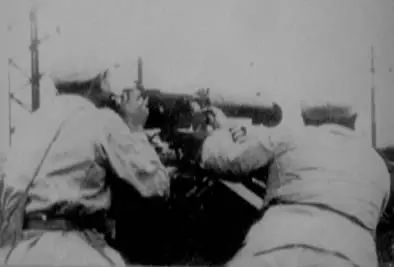
Southern Fujian
After the liberation of Shanghai, the Kuomintang army's defense in Fujian was mainly responsible for Zhu Shaoliang, director of Fuzhou Sui Agency. People are divided into the 6th, 8th, and 22nd Corps, and are responsible for defending Fuzhou, Xiamen, Golden Gate and other places. Among them, the enemy of Fuzhou is the 6th Corps of Li Yannian. He commands about 60,000 divisions in 5 troops.
Entering the Fujian is the most glorious task of the Central Military Commission and Misako, which has given the 10th Corps. It has captured Fujian and can occupy the outpost of the liberation of Taiwan, which is of great significance.
In early July 1949, Ye Fei, Wei Guoqing and the Standing Committee of the East China Bureau, Zhang Dingyu, Secretary of the Fujian Provincial Party Committee, brought 10 soldiers and 5,000 local cadres, 3,000 former migrant workers from southern southern south, mighty marching towards Fujian. The train transportation and roads are rugged and densely marching on the jungle.
At this time, the 10th Corps in Fujian and the Fujian -Zhejiang -Jiangxi column who insisted on fighting behind the enemy had been a victory in northern Fujian, raised a large number of grains and grass, and fully responded to and supported the south.
According to the defense of the enemy in Fujian, on August 6, the 10 troops of the 10th Corps held a plug -shaped attack on the enemy defending the enemy in 3 roads. Liberated Fuzhou on the 17th. Under my continuous blow, the enemy fled and was wiped out by our army to wipe out the two sides of the Wulongjiang region northwest of Fuqing. By the 23rd, the Battle of Fuzhou ended with nearly 40,000 enemies.
On August 25, while the people's government of Fujian Province was established, the Fujian Military Region was established, which was also established by 10 military regiments. Commander Ye Fei, political commissar Zhang Dingzhen, Wei Guoqing.
After capturing Fuzhou, the 10th Corps entered the south along the Fuxia Highway with the 29th Army and the 31st Army, which was close to the Zhangsha area. The enemy Liu Ruming 80,000 troops of the 8th army defended Zhangxia, and Li Liangrong had more than 20,000 in the 22nd Corps to defend the big and small Jinmen. On September 19, the 10th Corps launched the Battle of Zhangxia, captured Tongan on the same day, and occupied Zhangzhou at dusk. On the 25th, our army captured the positions of Xiamen and wiped out more than 17,000 enemies. At 15 o'clock on October 15th, my 29th and 31st Army issued the general attack on Xiamen and Gulangyu. After fierce competition, the battle ended at 11 am on the 17th. Tang Enbo. At this point, the remnants of Fujian have been wiped out by me except the islands such as the big and small Jinmen. In this battle, the 31st Army and 92th Division of the 31st Army 92nd Division of the Zhangzhou Mission performed very well. The regiment bravely chased the enemy's military ministry and about 1 tens of thousands of divisions, and made great contributions to the liberation of Zhangzhou. Bloody Golden Gate
With the continuous encouragement of victory, the main attention of the leaders of the 10th Corps transferred to the city to take over, making the 28th Army preparing to attack Golden Gate. Kinmen Island is one of the strategic bases of the Southeast coast of the Kuomintang Army, located 10 kilometers east of Xiamen. Before the war, I learned that the enemy was about 20,000 people in the 22nd Corps Li Liangrong. The Enemy 12 Corps Hu Yan Department evacuated Chaoshan and seemed to be moved to the Golden Gate (in fact, more than 10,000 people in the 18th Army of the Corps had arrived.
Under the influence of the emotions of "not to slow", it is inevitable that the rival is inevitable. The 28th Army decided to use more than 8,000 people in the 82nd division 244 regiment, the 251st regiment of the 84th Division and the 29th Army 85th Division as the first echelon, and the second echelon with more than 11,000 regiments to launch Kinmen landing.
At 21:00 on October 24th, the three regiments of the first echelon were located at the Northeast Bay of Australia, Daji Island and Lianhe River, and passed at 23:45 to drive into Kinmen. At 1:40 on the 25th, the head of the 244 regiment broke the land at Longkou, and the 253 regiment landed at Guning. At 2:00, the 251th regiment landed in Huwei Township. After the 253 regiment landed, the regiment instructed the 3 battalions to consolidate the beach head position, and the 1 or 2 battalion was inserted to depth. Leaving the 3 battalion at Guning's head is very wise, providing support for the 3 days of fighting for the island forces. After the successful landing of various regiments, the unable to rectify the system, in accordance with the principle of "several people fight a few people, do not wait, do not hesitate, and insert it inwardly." Ben the goal in the case. Because there were not one person in the teacher -level cadres, and the three regiments had no command, they failed to move closer to each other and communicate, giving the enemy the opportunity to break my three groups each. Although there were many mistakes in the landing organization, my group attacks were very brave and unstoppable. The position of the enemy's 201 Division was broken throughout the board within one or two hours. The defendant panicked and fled south.
After the successful landing in Longkou, the 244 regiments left the capture of the captives on the sea and inserted into the enemy's depth. Although the regiment progressed very fast, because it was not well organized and disturbed, when the two battalions came to Qionglin, they were stopping the Kuomintang army tank that was repaired the night before the exercise the night before, and was blocked by firepower. After dawn, the awake enemies gradually found out the landing point and landing scale of our army, and began to mobilize heavy soldiers to fight back. The enemy aircraft bombarded all the first echelons on the beach. The dense artillery fire attacked me to land in the army. The 244 regiment was very casualties and the offense was frustrated.
At 9 o'clock on the 25th, Xing Yongsheng, the head of the 244th regiment and the political commissar, used a walking machine to report the team to the 28th Army. In particular, it reminded that according to the captive supply, the 19th Army of the 12th Corps has also reinforced Golden Gate. At this time, the Kuomintang army on Kinmen Island has increased to more than 40,000 troops, which does not include the support forces of the sea and the Air Force. The more and more the Kuomintang army played, and the situation became more and more serious. At 11 o'clock, the Kuomintang tank rushed to the beach and continued to shoot at the wooden boats that were stranded on the shore with a bomb bomb. The wooden boat burned a fire. At noon, Xing Yongsheng organized the remaining personnel of the 244th regiment to form a ring defense in Shuangcha Mountain, and insisted on reinforcement.
◆ 31 officers and soldiers launched an attack on Xiamen Gulangyu.
One day on the 25th, the positions occupied by the 244th regiment of the East Road and the 251th Regiment of the Middle Road were basically lost, and the casualties were suffering. On the evening of the same day, Liu Tianxiang, the head of the 251th regiment, brought some personnel to the Guningtou to meet with the 253 regiment. At this time, there were still more than 1,000 people in the 253 regiment, but the ammunition was insufficient, giving difficulties to raise difficulties, and determined to adhere to assistance. At 3 o'clock on the 26th, Sun Yunxiu, the head of the 246th regiment of the 82nd Division, brought 4 consecutive Crossing Hai to reinforcement, and was responsible for commanding all the departments of the island. The four companies landed in the area of Huwei Township. After ashore, they annihilated a battalion of the Kuomintang army, and then advanced to Shuangshan area, and actively contacted the first echelon troops. However, there were too few for the second batch of landing troops. The breakthrough was blocked by the enemy after dawn. Sun Yunxiu took two consecutive breakouts with the 246th regiment, rushing to Gu Ningtou to meet the troops who persisted in the area. After the dawn on October 26, the situation on the island deteriorated sharply, and the Kuomintang army concentrated its main force. Under the cover of the navy and the tanks, it violently counterattacked Gu Ningtou, Linyu, and Pulou. On the morning of the same day, the remaining staff of our regiments increased up to more than 1,200 people, most of which retired from Gu Ningtou. On the one hand, heavy soldiers besieged, bombarded, and on the other hand, there were turbulent sea waves, no ships could retreat. In the face of such a desperate situation, my landed troops still resisted to the enemy and gave the enemy a major kill. On the night of the 26th, Sun Yunxiu convened the commanders of various regiments to meet, and decided to disperse breakthroughs to fight guerrillas and deal with the enemy to the end. The 28th Army refers to the interruption of the connection with Kinmen Island. The warriors could no longer come back. Tens of thousands of finger soldiers who had no ships who had no ships could overlook the seaside and overlook Kinmen. They cried together. At 10:00 on the 27th, the battle of Kinmen was over. Later, it was learned that Sun Yunxiu, the head of the 246th regiment, was determined to commit suicide by improper captives. Xing Yongsheng, the head of the 244 regiment and the political commissar, Liu Tianxiang, the head of 251, the political commissar Tian Zhichun, and Xu Bo, the head of the 253 regiment, were captured and were secretly killed by the enemy. Chen Lihua, the political commissar of 253, was not exposed after being captured. He was supplemented into the Kuomintang Army and was promoted to colonel for political and war units.
The battle of Kinmen was extremely fierce and profound. It was a major defeat in our army during the liberation war. A total of 9,086 were lost in two batches of the island troops, and more than 9,000 KMT troops were annihilated. After the war, Ye Fei asked for the details of the battle of the Sanye Telegraph and invited the sorrow. Mao Zedong instructed: We must be deeply considered to the rivals and impatience.
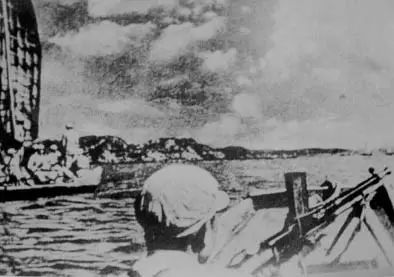
Senate in Fujian
In February 1950, the 32nd Army (29,000) directly under the East China Military Region went to Fujian from the south of Qingdao, and was established by the 10th Corps and the Fujian Military Region. It replaced the 28th Army to implement the northern Fujian bandits. The army was the fourth child soldiers pulled out of Jiao Dong. During the period of Fujian, a total of more than 380 battles were fought, and more than 8,000 bandits were in conjunction with the land reform and struggle between the bandit in Fujian.
In May 1951, the 10th Corps and the Fujian Military Region were renamed the Fujian Military Region and 10 Corps. In May 1952, the 10th Corps was revoked, and the original forces were led by the leaders of the Fujian Military Region. In July 1956, the Fujian Military Region was renamed the Fuzhou Military Region (Grand Military Region), and Ye Fei served as commander and political commissar. In March 1957, the Fuzhou Military Region Public Security Army was adapted into the new Fujian Military Region. In 1960, it was renamed the Fujian Military Region. In August 1985, the Fuzhou Military Region and the Nanjing Military Region merged. At this point, the Sanno 10 Corps organ ended. For decades, the Corps and its continued stationed in Fujian defense, waiting for the war to fight against enemy disturbances, prepare to attack Taiwan, and maintain the unification of the territory of the motherland. In April 1999, General Ye Fei died. According to the will, the ashes of the veteran were buried on the mountain where Xiamen reached the sea in the next year. He failed to see Taiwan's return during his lifetime. Then he hoped that he would see this day after his death.
not
not
not
not
- END -
With the art of "chaotic", she enters non -heritage "embroidery" into the home of ordinary people

A 3000 -year -old rice
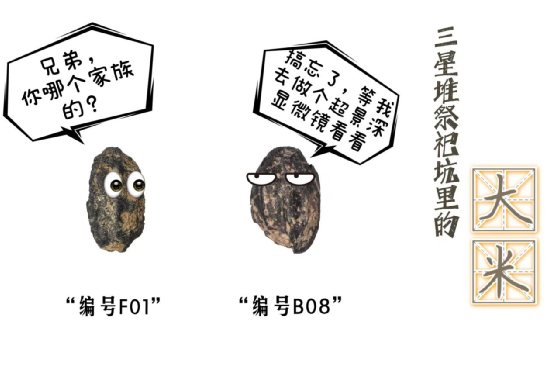
I am a rice in the Sacrifice Pit, Sanxingdui, Sichuan, China. I am in their 3,0...